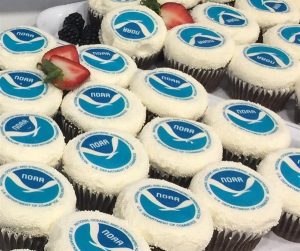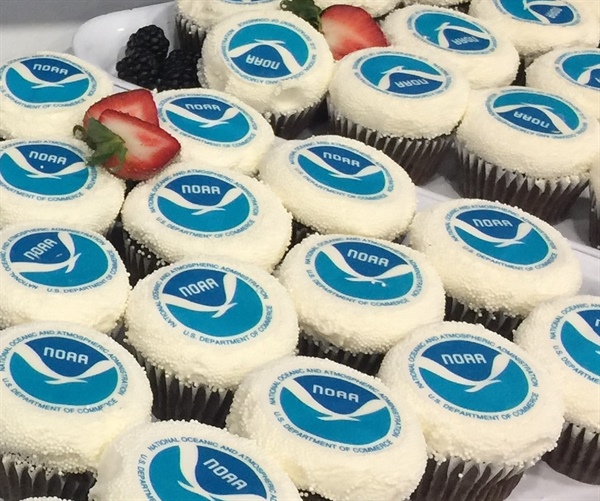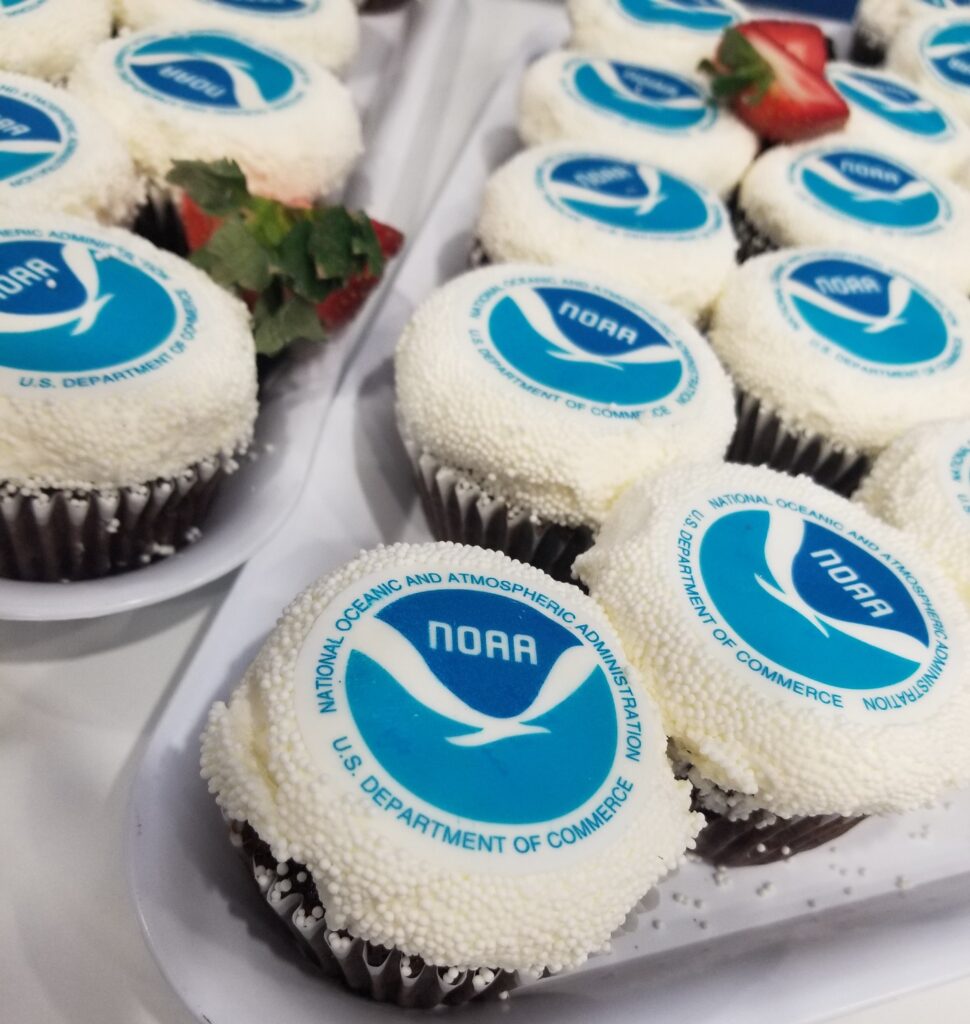GOMO at the AGU Fall Meeting 2020
 The American Geophysical Union (AGU) Fall Meeting will take place virtually this year from December 1-17. GOMO Program Manager, Emily Smith, and Knauss Fellows Cheyenne Stienbarger and Ann-Christine Zinkann will be leading sessions below. GOMO’s 2020 Hollings Scholar Amanda O’Shaughnessy will be presenting a poster of her research on sea level planning, and GOMO’s Arctic Research team will be releasing the 2020 Arctic Report Card at a press conference. See details below.
The American Geophysical Union (AGU) Fall Meeting will take place virtually this year from December 1-17. GOMO Program Manager, Emily Smith, and Knauss Fellows Cheyenne Stienbarger and Ann-Christine Zinkann will be leading sessions below. GOMO’s 2020 Hollings Scholar Amanda O’Shaughnessy will be presenting a poster of her research on sea level planning, and GOMO’s Arctic Research team will be releasing the 2020 Arctic Report Card at a press conference. See details below.
Arctic Report Card
Press Conference
NOAA’s 15th Arctic Report Card catalogs for 2020 the numerous ways that climate change continues to disrupt the polar region, with record-high air temperatures in the Eurasian Arctic driving a cascade of impacts, including the loss of snow and the loss of ice from glaciers and ice caps. The Arctic Report Card is an annual report of original, peer-reviewed environmental observations and analyses of a region undergoing rapid and dramatic alterations to weather, climate, and oceanic, and land conditions. Compiled by 133 scientists from 15 nations, the 2020 report card tracks environmental indicators to inform decisions by local, state, and federal leaders confronting a rapidly changing climate and ecosystems. It will be released at a virtual press conference on December 8th at 11am EST.
Sea Ice Change and Variability: Implications for the Climate and Indigenous Communities of High-Latitude Systems
Session, poster, and eLightning<>Arctic sea ice cover has dramatically declined in recent decades, and more recently in the Antarctic as well. The transition from ice-covered to open water alters the air-sea exchange of momentum, heat, light, freshwater, and gas, enhances surface waves, changes the planktonic ecosystem, and shifts animal migration patterns. Sea ice conditions have also affected Indigenous coastal communities in a variety of ways, including reducing travel and access to subsistence harvesting opportunities. This session focuses on natural variability and long-term changes in the Arctic and Antarctic seasonal and marginal ice zones, gaps in current scientific knowledge, and Indigenous community information needs. This session will include observational, theoretical and numerical investigations that address these topics by connecting sea ice change in the Arctic or Southern Oceans to components within marine, terrestrial, or human systems at local to global scales. GOMO Knauss Fellow, Ann-Christine Zinkann is a co-primary convener and co-chair for this session. Link to session, eLightning, and poster.
Treading Water: Understanding Sea Level Rise and Connections to Coastal Flooding and Impacts
Sessions and poster
Although sea level rise is a global phenomenon, the impacts are local, and are happening now. Changes in sea level are impacting communities across the globe on an almost daily basis through increased erosion and subsidence, greater saltwater intrusion, more frequent “nuisance” flooding, and higher storm surge. Planning for, adapting to, and mitigating current and future sea level and its impacts has begun out of necessity in many threatened areas. This session discusses the information that is needed for such efforts, and identifies areas where improvements still need to be made. In particular, this session invites contributions on understanding and projecting regional sea level rise and variability and its impacts, accounting for and identifying changes in extreme events, and assessing the role of land motion in future coastal flooding. Other studies and possible products related to understanding, quantifying and projecting sea level rise on local and regional are also encouraged. The primary convener and chair for this session is GOMO Program Manager, Emily Smith. Link to session I, session II, and poster.
Paths to Resilient Shorelines: An Engineering Analysis of Sea Level Rise Planning from the Gulf Coast to the Mid-Atlantic
Poster
GOMO Hollings Scholar, Amanda O’Shaughnessy will be presenting a poster of her research on the varying sea level rise planning strategies from the Gulf to the Mid-Atlantic coast. Amanda worked on this research in her summer 2020 internship with the GOMO office under the guidance of GOMO Program Manager Emily Smith. Link to poster.
Application of in Situ and Remote Sensing Technology to Understanding Tropical Pacific Climate Variability
eLightning
Tropical Pacific interannual and decadal variability is dominated by the El Niño-Southern Oscillation (ENSO) and the Pacific Decadal Oscillation (PDO) and significantly impacts global weather and climate, including Pacific and Atlantic hurricane activity, droughts and flooding around the Pacific basin, ocean carbon outgassing and uptake, and global land temperature patterns. Recent activities in the tropical Pacific, including the redesign of the Tropical Pacific Observing System (TPOS) and the NASA SPURS-2 field experiment, have considered new technologies and novel applications of observing-based knowledge to advance our understanding and prediction of tropical Pacific variability. This session seeks presentations that highlight the application of technologies, including platforms, sensors, and novel analysis of existing observing techniques, both in situ and remote, with the potential to detect, monitor and attribute changes in the physical and biogeochemical systems of the tropical Pacific to our understanding of outstanding questions in tropical Pacific climate variability. GOMO Knauss Fellow, Cheyenne Stienbarger is the primary convener and co-chair for this session. Link to session.




